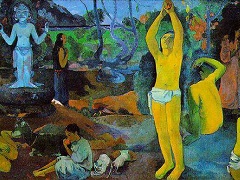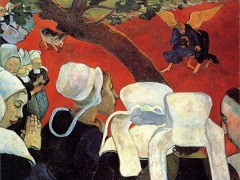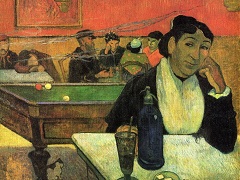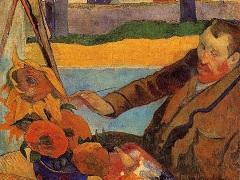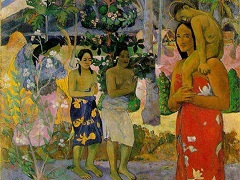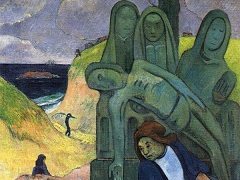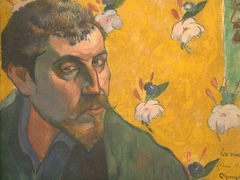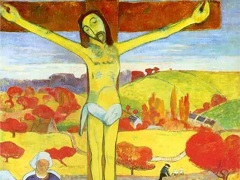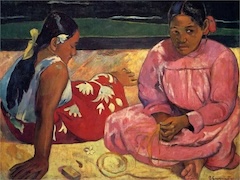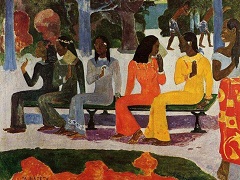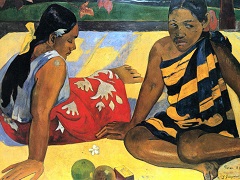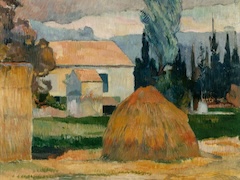Melancholy, 1891 by Paul Gauguin

Over Gauguin's south sea world, there somehow hangs a veil of melancholy. In his letters and journals he may talk of the delights of savage existence of "civilization from which you suffer, barbarism, which for me is a rejuvenation" but he does not paint it. He may talk of the unselfconscious Eve of Oceania, but he does not paint her.
Was the melancholy mood he so often communicates truly observed; was it really to be found among his Tahitian neighbors, whose naturalness and simplicity he preferred to the artificialities of the European colonials, or was it the sadness of his own feelings that he rendered? In any event the mood is there: in the poses which are as often constrained as they are languorous, in the expressions, which are more often sad than limpid, in the colors, whose lack of clear light and contrast lends a mournful, evening glow to their luxuriance. This woman, in her heavy garment, her thoughts turned inward and robbing her of all energy, is surely no spontaneous savage. Baudelaire, who like Gauguin had a longing for the primitive, and who in esthetic theory is one of the painter's immediate ancestors, would have recognized and greeted her: she seems at the mercy of that most civilized of all maladies, the poet's own ennui.

